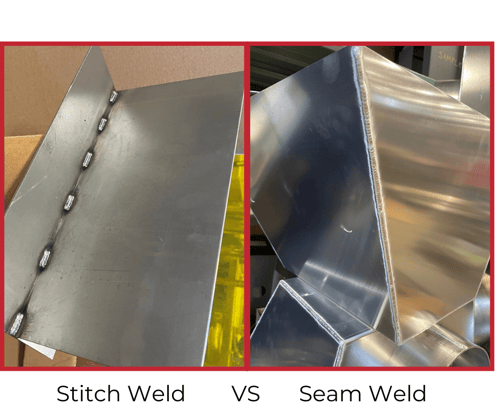Drive Down Product Cost for Welded Sheet Metal Applications
How can you get the quality sheet metal welding that you need at the best price? And are there alternatives to the types of welds you should consider that may reduce your product cost?
As a custom sheet metal fabricating and precision welding shop, Mika performs MIG, TIG, and Spot welding. Here we will discuss some of the different types of welds, their characteristics, and how you might be able to deviate from welds specified in your applications to reduce your price tag.
Types of Sheet Metal Welding
In sheet metal fabricating, there are three primary types of welding processes:
- MIG (Metal Inert Gas) welding. This is generally a faster, production-oriented welding process for metal fabrication projects that are used for bigger, more heavy-duty applications.
- TIG (Tungsten Inert Gas) welding. This is a cleaner and more precise process, generally used for welding on thinner materials, possibly with cosmetic requirements as well.
- Spot Welding. This is a flat-on-flat material fusion method that works due to a combination of pressure and heat. It is a clean process that produces no spatter.
It’s important to note, generally, the thinner the material, the more options for weld types that are available depending on the level of performance and cosmetic requirements necessary.
Obtaining Quality Sheet Metal Welding
“Mika understands our customers’ drawing specifications, craftsmanship and cosmetic expectations, which are met by our qualified welders. Every first piece is fully qualified by an inspector,” Mika’s Operations Manager, Bob Crouch explains. “And of course, in-process inspections take place at various intervals throughout the process as well.”
Questions about the welding Mika does? Contact us or arrange a tour to see for yourself!
Within the MIG and TIG processes, there are many different types of welds. Working with your sheet metal fabricating and welding shop during the design process will help ensure that you get the best weld type for the application and material, as well as one that conforms to necessary specifications.
Cost Savings Options for Precision Sheet Metal Welding Projects
In many light gauge metal fabrication designs, such as enclosure boxes; fillet, stitch, and seam welds are the most common types of welds. In some cases, full seam welds are needed, and in other applications, spot welding is required.

Involving your sheet metal welding fabricator early in the design process can save you (and your customers) time and money in the long run, as part construction methods and weld types can be designed for ease of manufacture, while still meeting design and performance requirements.
For example, customers may be able to save money by going with a stitch weld vs. a full weld as long as the assembly does not need to be water/airtight and is not structurally heavy in nature. In the same vein, tack welds and spot welds vs. stitch or fillet welds may also reduce cost and still be effective in joining the material as needed for product design and performance. Part design can also be modified for ease of fit-up, to reduce or eliminate fixturing and/or tooling costs.
To Weld or Not to Weld: Weldability and Welding Alternatives
“Weldability” is the capacity of a material to be welded to another material under normal conditions – usually, this means similar materials (i.e. mild steel to mild steel, graded stainless steel, or aluminum to the same grade). However, when welding dissimilar materials using the MIG/TIG processes, additional complications can arise if the processes are not adapted properly.
Some metals are not compatible and welding them can result in unsound joints. Coated metals also present unique challenges because they release dangerous fumes (galvanized, zinc, nickel, or copper-plated metals, for example) in the welding process. At Mika, we encourage our customers to contact us with questions about any of these scenarios during their design or sourcing processes.
Questions about MIG/TIG or spot-welded parts? Upload a file – and we’ll get back to you.
Spot welding can be an alternative method to MIG/TIG welding, for example, when a seam between parts doesn’t need to be water or airtight or have a major structural contribution to the design. Fasteners or other hardware can be attached using this method as well.
Welding alternatives are available and offered at Mika including a number of different solutions consisting of:
- Insertion of hardware via PEM assembly processes
- Installation of adhesive gaskets
- Application of industrial sealants
Wrapping Up
An experienced metal fabricating shop with skilled welders and process engineers can offer design and process alternatives/improvements and/or may be able to suggest alternate materials that can meet your specifications in order to keep costs down.
In addition to precision sheet metal welding, Mika offers assembly services, from simple welds to complex builds that require the integration of multiple sub-assemblies and a variety of hardware and fastener installations.
At Mika, we work with our vendors and customers to deliver the best possible finished products. We provide design expertise and welcome the opportunity to contribute during the design process. We may be able to offer different solutions and methods – even changes to spec when permitted – to enhance manufacturability and reduce lead times and costs.
Contact us for more information.
Are you an experienced welder? Mika is hiring! Please see our Careers page


Comments